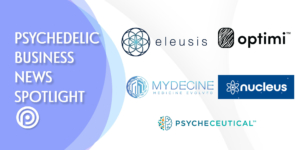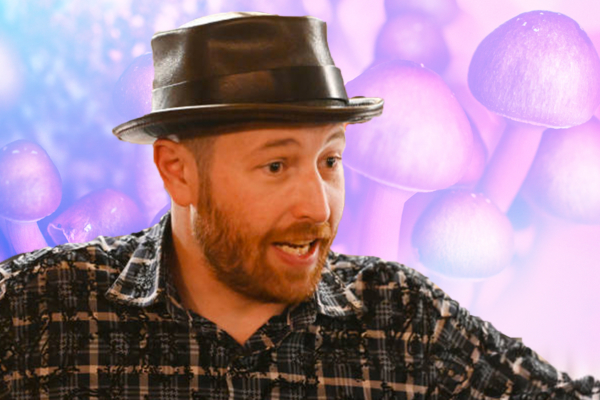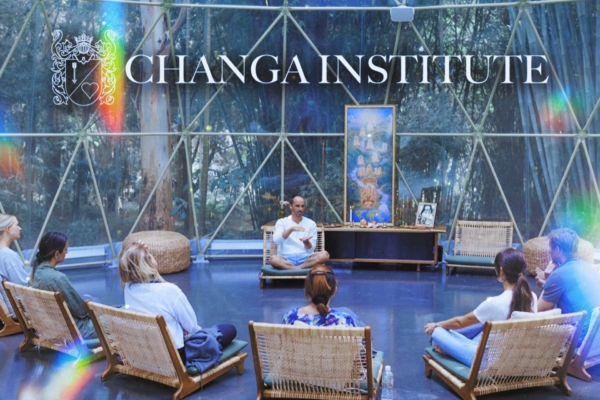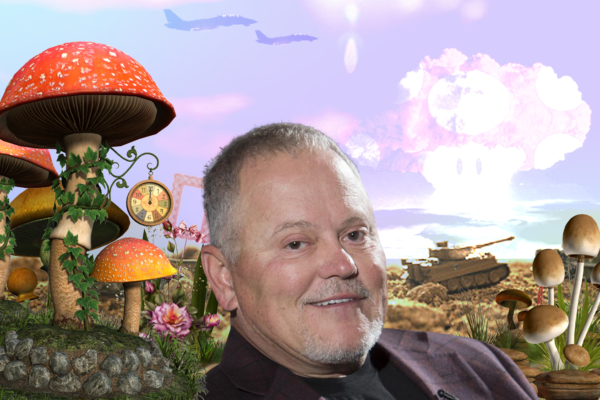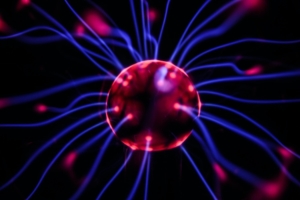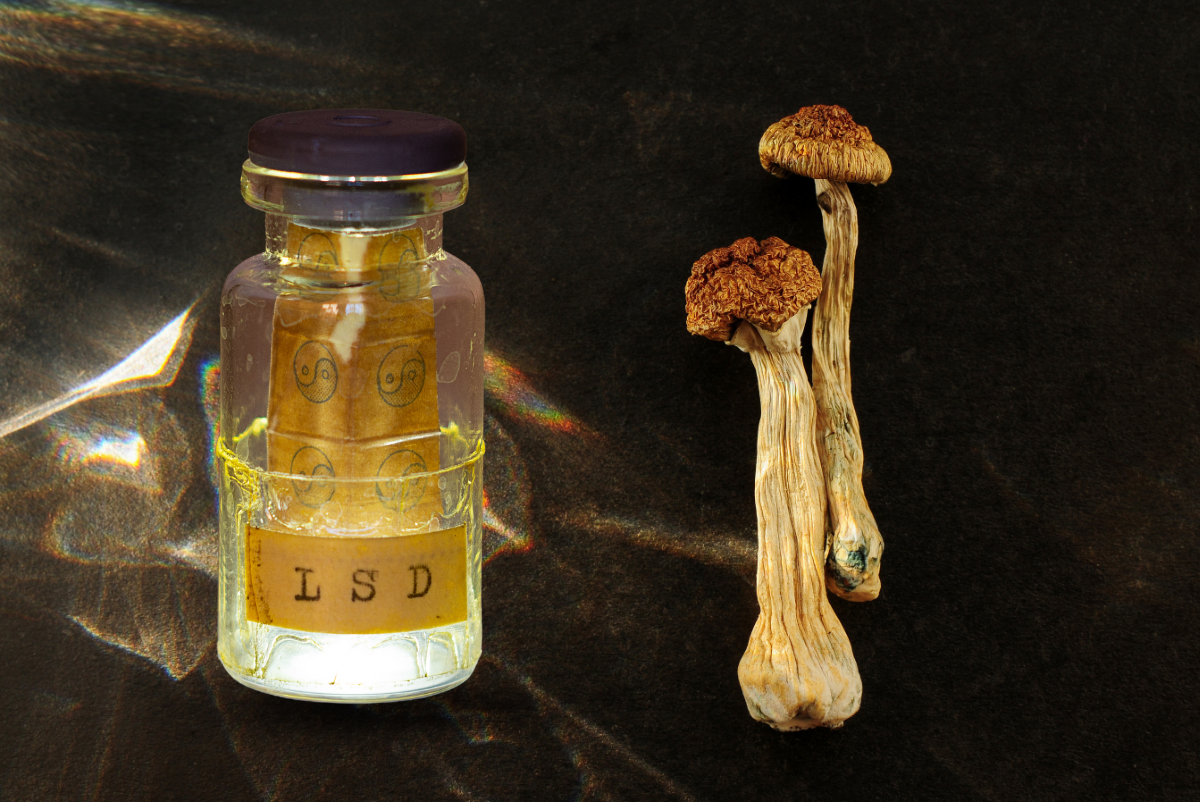
In the realm of psychedelics, LSD and shrooms may be among the most popular substances for exploring altered states of consciousness. Despite similarities in subjective effects between these two drugs, there are many distinctions that set them apart from one another. In this blog post, we’ll explore the various differences of shrooms vs. LSD so psychonauts can make informed decisions when it comes to taking either drug for therapeutic or recreational purposes. We will compare them in terms of chemistry, onset time, experience, duration of effects, adverse effects and their effectiveness as therapeutic agents.
What Are Psilocybin Mushrooms?
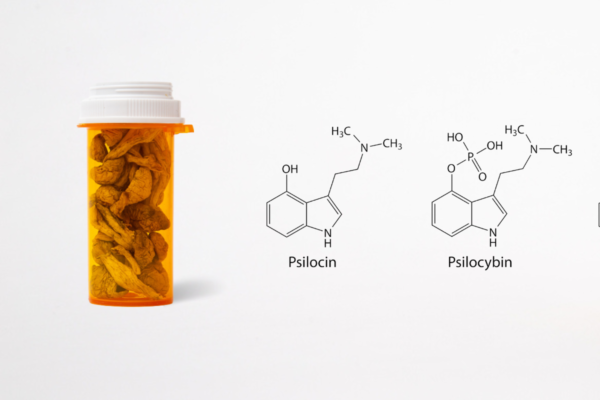
The reason why magic mushrooms have psychedelic effects is because of the presence of psilocybin and psilocin, natural compounds that belong to a group of chemicals called tryptamines. There are hundreds of mushroom species that contain psilocybin. However, it’s believed that the source of the psychoactive effects doesn’t lie in psilocybin itself. Psilocybin is only active when processed in the body and turned into psilocin, which is the actual psychoactive compound. Researchers think that psilocin triggers serotonin 2A receptors (5-HT2ARs), causing psychedelic effects in the brain.
Common street terms for psilocybin mushrooms are:
- Sacred mushrooms
- Magic mushrooms
- Shrooms
- Boomers
- God’s flesh
- Hombrecitos
- Las mujercitas
- Little smoke
- Mexican mushrooms
- Musk
To experience psychedelic effects from dried shrooms, people typically need to take at least 0.25 g, which is considered the threshold dose. The normal dosage range for dried psilocybin mushrooms is between 1-5 g.
You may also like: Are Magic Mushrooms Legal in Canada?
What Is LSD?
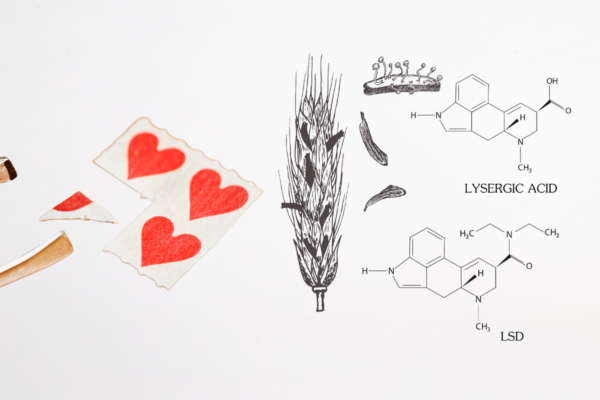
LSD is a man-made substance, first synthesized by Swiss chemist Albert Hofmann. The substance comes from ergot, a type of fungus found in grains such as rye. By using a chemical process, this substance can be converted into lysergic acid diethylamide (LSD).
You may also like: History of LSD – A Story of Self- Experimentation
Even small amounts of LSD can alter mood, thought processes, and perception, while larger doses can lead to intense psychedelic effects and changes in a person’s sense of time and space. Studies have shown that LSD is extremely potent and falls under the category of semi-synthetic psychedelic drugs.
LSD is distinct from tryptamines and belongs to a group of compounds known as ergolines. Hawaiian baby woodrose and morning glory seeds contain another ergoline called ergine, also known as lysergic acid amide (LSA).
You may also like: Forgotten Psychedelics: LSA — Also Known as Ololiuqui
LSD has various street names, such as:
- Acid
- Lucy
- Purple heart
- Stamp
- Battery acid
- Sunshine
- Heavenly blue
- Tabs
- Sugar cubes
- Microdots
- Blotters
Shrooms and LSD differ in terms of dosage. The threshold dose for LSD is around 20 mcg, which is approximately 1,000 times less than the dosage for mushrooms. Typically, LSD dosage ranges from 75-300 mcg.
Route of Administration
Shrooms and LSD have a noticeable difference in their usage. Most people take psilocybin by eating dried mushrooms, either by chewing them or in capsules, whereas LSD, being a liquid chemical, is dropped onto small paper squares, sugar cubes or directly ingested in mouth. Some prefer other methods for ingesting shrooms, such as teas or strong lemon tek shots. In certain cases, researchers may give psilocybin or LSD intravenously during clinical trials. Whatever method you choose for shrooms or LSD, always prioritize safety and information. Remember, knowledge is power.
You may also like:
How to Take LSD: A Beginners Guide
Microdosing Psilocybin for Beginners in 5 Easy Steps
LSD vs. Shrooms: Onset Time, Subjective Effects, Perceptual Experiences & Mood
In 2022, a study was conducted and published in the Journal of Neuropsychopharmacology. It aimed to compare the short-term effects of LSD and psilocybin in healthy individuals through a double-blind placebo-controlled study.
In the study, 24 healthy individuals were selected randomly and divided into three groups: LSD, psilocybin, and placebo. Throughout the study, participants underwent various assessments such as vital signs, subjective effects, mystical experience, and adverse events.
We’ll discuss some of the study results including what we already know about the differences and similarities of shrooms vs. LSD.
Onset Time
According to the study, LSD has a more rapid onset of action, with participants reporting significant changes in perception, mood, and thought processes within the first 30-60 minutes after administration.
On the other hand, psilocybin has a slower onset, and it takes between 60-90 minutes for participants to report notable changes in their subjective experiences.
Absorption and Metabolism
The reason why the onset time of shrooms and LSD differs is because of the variation in their absorption and metabolism in the body.
LSD is a synthetic compound that is rapidly absorbed through the gastrointestinal tract. In contrast, psilocybin is a naturally occurring compound that is found in mushrooms and takes longer to be metabolized and absorbed.
The variation in onset times between LSD and psilocybin may affect how they are used for therapy or recreationally. If a faster onset is necessary, then LSD may be a better option. On the other hand, if a slower and more gradual onset is desired, then psilocybin may be the preferred choice.
It is important to consider the differences in onset time between LSD and shrooms when selecting a substance for a specific therapeutic or recreational purposes. Further research is necessary to fully comprehend these distinctions and their potential outcomes.
Duration of the effects
The effects of shrooms usually last for about 6 hours whereas LSD can last for up to 12 hours, and in some cases, longer if the amount taken is high. Although the experience may differ, the similarity between LSD and psilocybin suggests that they operate similarly. Although LSD trips last longer, many people feel that they move more quickly than mushroom trips.
Similarities in Subjective Effects
Both LSD and psilocybin have similar subjective effects such as alterations in perception, mood, and thought processes. These characteristics of a psychedelic experience are responsible for the potential therapeutic effects of these substances. However, because LSD has a quicker onset, its subjective effects last longer when compared to psilocybin.
Psychonauts report that both substances cause changes in how they experience the world through their senses, including heightened colors, textures and patterns. People may also experience changes in their sense of time and space, with some reporting a slowing of time or feeling disconnected from their body.
Perceptual Experiences: Similarities
- Heightened colors, textures and patterns
- Increased sense of time and space
- Disconnectedness from the body
Mood Similarities
Both substances are reported to cause similar emotional experiences, including:
- Positive and negative emotions such as euphoria, anxiety, and fear
- Feeling more emotionally open and empathetic towards others
- Feeling more introspective, with increased insight into their own thoughts, emotions, and behaviors
Changes in Thought Processes
LSD and shrooms can both cause alterations in the way people think. According to research, people report that they have gained new perspectives and insights as their usual thinking patterns became more flexible.
Changes may include:
- Alterations in cognition and perception
- Increased sense of creativity and a more expansive or holistic perspective
Differences in Subjective Effects
Although both shrooms and LSD can produce psychedelic effects, people who have experimented with both usually observe noticeable contrasts. These variations might be a result of the chemical distinctions between tryptamines and ergolines.
Here are some of the primary experiential differences between shrooms and LSD.
Differences of Visual Experiences
The visual experience on shrooms can be characterized by:
- Organic and earthy visuals that evolve gently and smoothly
- Objects may morph and distort more
- Heightened intensity when eyes are closed
The visuals for LSD have the following characteristics:
- Clearer and sharper images
- Objects have more details
- They change rapidly
- They are usually not as strong when eyes are closed
There are mixed opinions regarding which is more potent in terms of visual effects: LSD or shrooms. Some individuals believe LSD produces stronger visual effects, while others argue that magic mushrooms are more potent.
The Mystical Experience
When talking about the differences and similarities of mystical experiences of shrooms vs. LSD, research has established that both LSD and psilocybin have been found to cause significant increases in mystical experiences as measured by the Mystical Experience Questionnaire (MEQ).
Similarities
Both shrooms and LSD produce significant increases in all four subscales of the MEQ:
- Mystical and positive mood
- Transcendence of time and space
- Ineffability
Nevertheless, it was found that psilocybin result in a higher enhancement of MEQ scores than LSD does. This indicates that psilocybin could potentially be a more efficient agent in facilitating mystical experiences.
Differences
There are some differences in the specific aspects of the mystical experience induced by LSD compared to shrooms.
LSD leads to increased production of:
- Alterations in perception
- Thought processes
- Mood
On the other hand, psilocybin produces more changes in:
- The sense of time and space
- A more profound mystical experience
The varying quality and quantity of the mystical experience from LSD and shrooms could impact their potential therapeutic use. If a more intense mystical experience is needed, psilocybin may be the better option. Nonetheless, both substances appear to be useful in inducing mystical experiences and may have therapeutic benefits for various psychiatric disorders.
Further research is required to fully comprehend the correlation between mystical experiences and the potential therapeutic effects of LSD and psilocybin. However, the similarities and distinctions in these experiences imply a shared mechanism of action in the brain.
Side effects
Mushrooms and LSD have low risks, but it’s important to note that both can lead to physical and psychological issues. Some possible physical effects include:
- Increased blood pressure
- Accelerated heart rate
- Sweating
- Tremors
- Numbness
Psilocybin may cause several symptoms, including:
- Drowsiness
- Vomiting
- Stomach discomfort
- Nausea
- Heavy body load
The physical effects of LSD include:
- Increased stimulation and energy
- Restlessness
- Decreased body load
- More intense body high
If you have a cardiac or vascular disorder, temporary effects may occur that are usually harmless. It’s important to note that there is a risk of having a negative psychological experience involving paranoia or fear.
HPPD
Both LSD and mushrooms have been associated with a rare condition called hallucinogen-persisting perception disorder (HPPD). This condition causes people to experience frequent hallucinations or “flashbacks” for a prolonged period after a psychedelic experience, lasting for weeks, months or years. The cause of HPPD is still unknown, and it is not clear why only certain individuals develop this condition.
You may also like: Understanding HPPD to Prioritize Harm Reduction of a Very Real Psychedelic Risk
Serotonin syndrome
Taking LSD or mushrooms while on antidepressants like SSRIs or MAOIs can increase serotonin levels and cause serotonin syndrome. While some may stop taking their antidepressants before a trip, it is not recommended. To stay safe, it is best to avoid LSD and mushrooms if you are on any of these medications. However, there is some research showing that mixing some antidepressants with psilocybin may be safe.
You may also like: Can You Combine Psychedelics and Antidepressants?
Research into LSD as a Potential Therapeutic Agent
According to research, LSD might be a potential treatment for various ailments, such as anxiety and depression caused by severe illnesses. For the sake of this article, we will only explore the most advanced research.
LSD for Major Depressive Disorder (MDD)
A recent Phase II trial by MindMed involving 61 patients investigated the effectiveness of LSD to treat Major Depressive Disorder. According to the study results, LSD showed significant, rapid, and lasting improvement in those who received the treatment compared to a control group, leading to a significant reduction in depression symptoms.
You many also like: Phase II Study Shows LSD Is Effective In Treating Major Depressive Disorder
Related: Compass Pathways Study Finds SSRI Drugs Did Not Impede Psilocybin’s Therapeutic Effect
LSD for Anxiety
Another Phase II study showed “significant, rapid, durable, and beneficial effects of LSD” which could potentially safely mitigate symptoms of anxiety and depression. According to the study, after 16 weeks of treatment, 65% of patients experienced a minimum of 30% reduction in their anxiety levels compared to before treatment. In contrast, only 9% of patients in the placebo group experienced the same level of reduction.
You may also like: MindMed’s Phase 2 LSD Trial Treating Anxiety Was a Success
MindMed is currently recruiting adult patients between the ages of 18 and 74 to join a Phase IIb study investigating the effectiveness of MM-120 for treating generalized anxiety symptoms. The study will involve 200 patients and will be conducted at 20 locations throughout the United States. The first patient was treated in August 2022. MindMed will administer four different dosages of the drug and compare them to a placebo to determine the most effective dosage for future pivotal studies.
Research into Psilocybin as a Potential Therapeutic Agent
Psilocybin is currently being studied in clinical trials as a potential treatment for mental health disorders like depression, anxiety, and addiction. Although the results of these trials are still in the early stages, there are some promising findings that suggest psilocybin may be an effective tool for treating these conditions.
Here are some of the most advanced clinical trials:
Psilocybin for Treatment Resistant Depression (TRD)
In 2022, we witnessed results from one of the largest psilocybin clinical trials so far. COMPASS Pathways announced the publication of their Phase II study on COMP360 psilocybin therapy for treatment-resistant depression (TRD). The study involved 233 patients who were treated with either 1mg, 10mg, or 25mg COMP360 psilocybin, along with psychological support from specialized therapists. Around 30% of patients with treatment-resistant depression (TRD) achieved remission in the third week after receiving a single dose of 25mg COMP360 psilocybin therapy. Additionally, twice as many TRD patients who received the 25mg dose showed a sustained response up to week 12 compared to those who received a 1mg dose. COMP360 psilocybin was generally well-tolerated.
During the administration of COMP360, many participants experienced side effects such as headache, nausea, and dizziness. The incidence of these side effects appeared to increase with higher doses. It is worth noting that suicidal ideation and intentional self-injury were observed in all treatment groups, as is often the case in studies involving treatment-resistant depression.
We are currently monitoring COMPASS’ most advanced clinical trial on psilocybin for treatment-resistant depression (TRD), which is expected to conclude by October 2024. This program is a Phase III trial consisting of three clinical trials, including two pivotal trials and one long-term follow-up, which began January 2023. This program was initiated after positive results from their Phase IIb study on TRD.
The pivotal program design is as follows:
The first pivotal trial, COMP 005, involves giving a single 25mg dose of a drug to 378 people and comparing it to a placebo. The goal is to see if the treatment response is the same as what was seen in a previous study with 233 participants.
The second pivotal trial, COMP 006, involves giving repeated doses of the drug to 568 people in three different doses: 25mg, 10mg, and 1mg. The goal is to see if a second dose can increase the number of people who respond to the treatment, and if there is a better response with the repeat administration of the 10mg dose. This trial also aims to explore the potential for a meaningful treatment response from the drug.
The main goal in both of the pivotal trials is to measure the difference in MADRS total score at Week 6, compared to the baseline.
Psilocybin for Major Depressive Disorder (MDD)
The Usona Institute is carrying out a clinical trial called Phase II, which is focused on exploring the potential of psilocybin to treat major depressive disorder (MDD). The trial is designed as a randomized, double-blind, and placebo-controlled study to evaluate whether psilocybin is safe and effective in treating MDD. The study will include 100 participants, ages 21 to 65, who have not previously responded to at least two treatments for MDD. The primary goal of the study is to measure how much the patients’ depressive symptoms decrease, which will be measured by the Montgomery-Asberg Depression Rating Scale (MADRS). Other outcomes of the study include changes in anxiety, quality of life, and cognitive function. The trial was anticipated to finish by the end of 2022, and we expect to receive the results in 2023.
The study is important because it seeks to offer valuable information regarding the safety and effectiveness of psilocybin as a remedy for MDD, which affects countless individuals globally and can be challenging to manage using available drugs. If the study proves successful, it may lead to more extensive research and eventual FDA endorsement of psilocybin as a treatment option for MDD.
Psilocybin for Alcohol Use Disorder (AUD)
In 2022, the Heffer Institute published the results of their randomized clinical trial investigating the use of psilocybin-assisted psychotherapy for the treatment of alcohol use disorder (AUD) in the JAMA Psychiatry Journal. The study involved 93 participants with AUD who were randomly assigned to receive either psilocybin-assisted psychotherapy or a placebo.
The study found that the group of participants who received psilocybin along with psychotherapy had a significantly lower percentage of heavy drinking days during the 32-week follow-up period compared to the group who received diphenhydramine along with psychotherapy. In other words, psilocybin combined with psychotherapy resulted in a significant reduction in heavy drinking days compared to an active placebo combined with psychotherapy.
All in all, to properly explore the use of LSD and psilocybin in psychedelic-assisted therapy, it is important to take into account the various factors that may impact their effectiveness in clinical trials.
Psilocybin has an advantage over LSD as the session is typically shorter, lasting around six hours, making psychedelic therapy less expensive since less time and effort are required.
However, both shrooms and LSD are increasingly being acknowledged for their potential benefits in producing life-changing experiences. This trend has led pharmaceutical companies to rush to develop their own versions of the drugs. Pharmaceutical companies are working hard to create new products and services that will be more affordable to consumers. The companies are competing to be ahead in the game, and consumers can expect to see various versions of these drugs as the companies rush to meet the demand for change.
Disclaimer: Psychedelic Spotlight does not condone the use of illegal substances. The purpose of this article is for educational and harm reduction purposes only. If you suffer from a medical or mental condition, please consult with your doctor before taking any substance.
